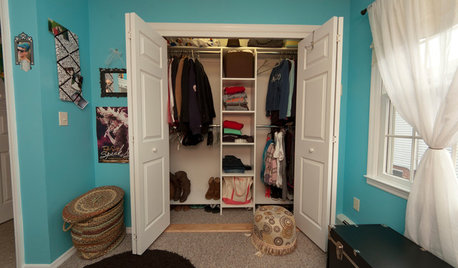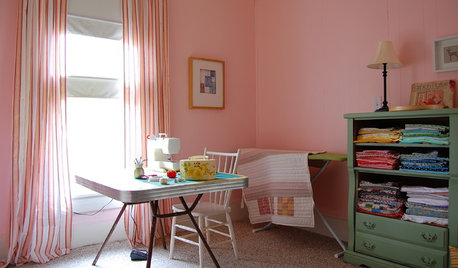Good Sewing Habits
Toad_lily_z8
17 years ago
Related Stories

KITCHEN DESIGNEcofriendly Kitchen: 9 Healthy Lifestyle Habits
Good for your body often means good for the planet. These kitchen ideas can help make your cooking and eating routines better for both
Full Story
HOMES AROUND THE WORLDHousehold Habits and Customs to Borrow From Other Countries
Discover why salt may be the perfect house-warming gift, how to clean rugs in snow and why you should invest in a pair of ‘toilet slippers’
Full Story
ORGANIZING7 Habits to Help a Tidy Closet Stay That Way
Cut the closet clutter for a lifetime — and save money too — by learning how to bring home only clothes you love and need
Full Story
FURNITUREHow to Keep Your Upholstery Looking Good
You wouldn't expect your car to maintain itself. Show your sofa and chairs the same courtesy with this 3-part strategy
Full Story
HEALTHY HOME16 Ideas for a Healthy, Feel-Good Home
Making these small tweaks and bigger shifts at home can help you thrive everywhere you go
Full Story
STUDIOS AND WORKSHOPSA Stitch in Time: Creative Sewing Spaces
Sewing rooms have become popular again as people of all ages embrace simple crafts they can do at home
Full Story
ARCHITECTUREWhat the Heck Is 'Good' Design Anyway?
We yearn for it and strive for it, but good home design isn't always easy to grasp. These 8 prescriptions from an architect can help
Full Story
PETSHow to Help Your Dog Be a Good Neighbor
Good fences certainly help, but be sure to introduce your pup to the neighbors and check in from time to time
Full Story
VINTAGE STYLEAntique Sewing Machines: Tailor Made for Nostalgic Decor
In full-on vintage rooms or contrasting modern looks, old sewing machines and tables are stirring up the past in a most stylish way
Full Story
MOST POPULAR5 Remodels That Make Good Resale Value Sense — and 5 That Don’t
Find out which projects offer the best return on your investment dollars
Full StorySponsored
More Discussions






kathi_mdgd
temom
Related Professionals
Austin Furniture & Accessories · Lebanon Furniture & Accessories · Fountain Furniture & Accessories · Northridge Furniture & Accessories · Silver Spring Furniture & Accessories · East Patchogue Interior Designers & Decorators · Garden City Interior Designers & Decorators · Houston Furniture & Accessories · Indianapolis Furniture & Accessories · St. Louis Furniture & Accessories · Topeka Furniture & Accessories · Pinehurst Furniture & Accessories · Stamford Furniture & Accessories · Fort Lauderdale Staircases & Railings · La Palma Staircases & Railingsloganhogan
chelone
keepeminstitches
Toad_lily_z8Original Author
rolsgrl
colleenny
noinwi
gerryo86
sarasal
vall3fam
madam_butterfly
willworkforflowers
movingwest
Woodsy
tinynedl
sheesh
teresa_nc7
aok27502
sheesh
FlamingO in AR
chatrbug
Woodsy
imsewhappy
bonnie-w
jaybird
imsewhappy
keepeminstitches
barefootin
wishmeluck
cmc_97
zone_8grandma
donnar57
michelle_co
zone_8grandma
steiconi
kathi_mdgd
ridgestitcher